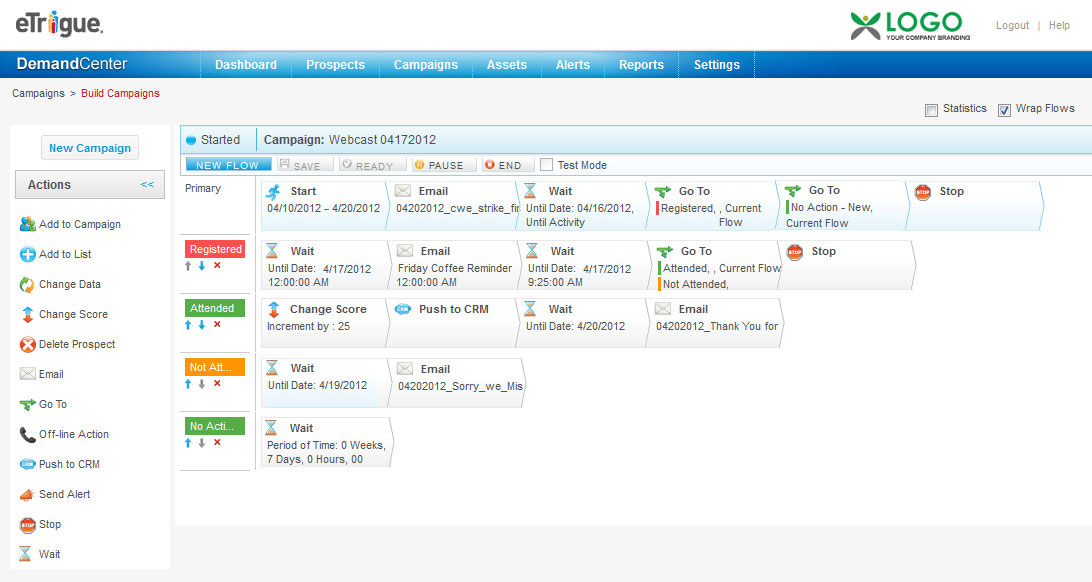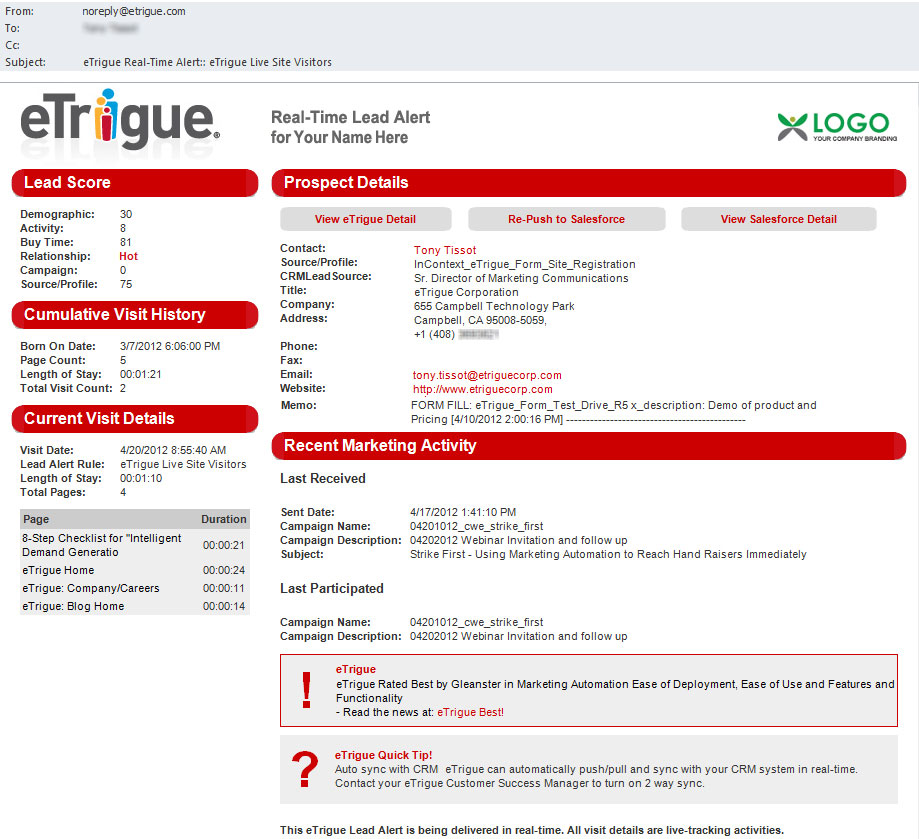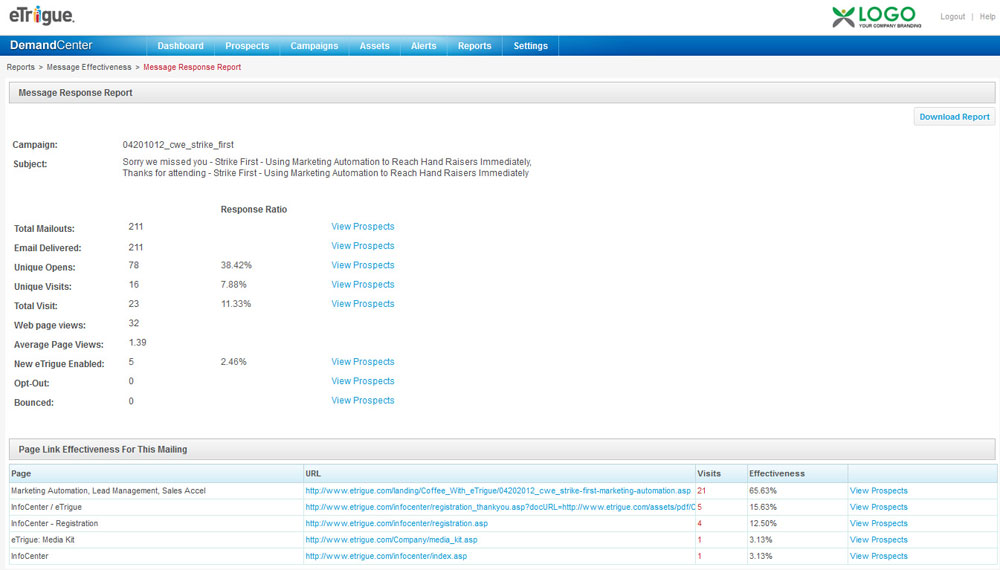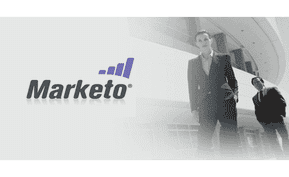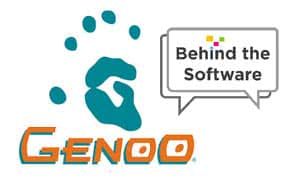Marketing Automation
eTrigue Marketing Automation for a New Era in Marketing Campaigns

The world is going through some pretty incredible paradigm shifts not only in our everyday lives, but also in the way we work and do business. Business interactions and engagement with customers has also changed dramatically, which is making traditional marketing tasks less and less effective.
We sat down with Jim Meyer of eTrigue to talk about marketing automation, the way that evolving technologies have changed the marketing world, and what eTrigue marketing automation does to help its customers and clients adapt to those changes.
To learn more about eTrigue, you can visit their site here or check out our eTrigue DemandCenter profile.
How was eTrigue founded, and what the problem you set out to solve?
As time went on, a lot of the customers said, “Hey, this is great, we’d like to go ahead and use it ourselves.” Thus the eTrigue product was born; and since mid-2005, it’s grown to become what we now call our eTrigue DemandCenter product line.
What do you feel was the most difficult part about getting started?
I think one of the biggest challenges was how to rate or choose what features we’re going to add in what order, but at the same time we maintain the idea of keeping it very simple and very straightforward. On a lot of features, we’ve been first to market; but with a lot of other features, we are an early follower because we want to do it in a way that simplifies the process.
One of the nice things about growing out of an agency, with regard to building out the product, was that we had a very large portfolio of clients that we could interface with to truly understand what their needs were. While it’s nice to do surveys and focus groups, daily activity and interaction with customers generating new marketing programs gives you keen insight into what they need, as well as the trends that are going on in the marketplace.
What do you feel makes eTrigue marketing automation different from other solutions?
The big difference is the approach we’ve taken with regard to the overall application interface. One of the biggest challenges marketers have is the limited time to put together marketing programs, but inevitably we’ll want to change them. So what eTrigue has done is create an interface that allows you to build your programs as you go.
You might not have all the assets in place, such as landing pages or email templates, but you can start your campaign, start building marketing programs, and add on to them as time goes on. A lot of other solutions make it very difficult to do that; you can’t add steps, change steps, or update campaigns in real time.
We’ve made it very flexible so that the marketer can understand exactly what’s going on at any time in their marketing efforts, as well as understand what’s working and what’s not working, then modify that as their marketing programs progress. It takes you from the industry standard of having to have everything done upfront to a situation where you can be very creative and continually modify it so that it performs better. On the other hand, if it’s more of a challenge to make adjustments along the way, people will just let the campaign run and let the chips fall where they may.
We believe that at every step of the campaign, you need to think about how each little element is working, and be able to go in and correct it in such a way that’s quick and easy. I think that’s the greatest differentiator in eTrigue’s DemandCenter versus other market and automation platforms.
Who do you feel is the ideal eTrigue customer?
There’s not a particular segment, it’s a type of business — the higher value B2B customers are our primary target. I would say that the typical company that finds marketing automation attractive is a company that has a reasonable amount of revenue per customer per year. We typically like to look at the customers that have an annual value of their customers of maybe a couple of thousand dollars a year at the minimum, because then you can afford to use the system to drive your marketing efforts.
Ultimately, in the B2B world, very often a lot of the businesses that use our product do have in-house or external sales teams that focus on their customers. Typically, higher tech, more sophisticated companies is where the market’s starting; but we are starting to see this move into some very heavy industry markets, such as the medical industry.
Because the changing technology world is affecting the way a lot of companies do business, how have you seen the marketing landscape change over the past several years?
The biggest trend is that the buyer has gained control of the purchasing process. I think we all have to recognize that with the advent of the Internet and digital marketing activities, the marketing strategies that companies have to follow have changed dramatically. We’re long gone from the days where the company marketing has control over the buying process — that has almost completely shifted to the buyer. We see individuals doing tremendous amounts of research before they ever even engage with a company.
That’s just one more reason to use a marketing automation system, so that you have all that information and all the tracking of those individuals that come to your website before they ever engage with you. Then when they do, you have that deep history of what we call the “digital biography” of that individual so that you can understand what they’re interested in and market to them effectively. You have to have a system in place that puts your best foot forward from day one, because you often don’t get a second chance.
It’s put marketing departments in a very different position, pushing them much more closely to the sales process. Ads and the PR that marketing generates is no longer a focus for a marketing department; it’s now come down to numbers and analyzing how well your website’s performing, your emails are performing, and your campaigns are performing. It brings the marketing and sales process much more closely together.
What do you see as some of the major challenges that your customers face in terms of marketing, and how can they overcome those challenges?
One thing we see on a daily basis is that we’re going through a transition from a very soft marketing world into a very quantitative world. A lot of marketers chose their profession because they’re more visually oriented and more in tune with the creative side of the marketing world, but now it’s all about numbers, statistics, and open rates. I think a lot of marketers are challenged with making that move from creative to analytical.
The second biggest challenge that companies have is just understanding what the best practices are and how they can market more effectively in this new customer-centric buying process. There’s a lot of companies out there with email marketing alone; and now they’ve graduated to marketing automation where they’re getting more information and tracking, but there’s not a lot of real marketing operations experts out in the world today, especially in smaller organizations. What we try to do is provide lots of educational materials; every other week, we do half-hour “Coffee with eTrigue” just to provide purely educational quick bites where marketers can get up to speed on different issues in the digital marketing world, best practices, things like that.
How did you guys come up with the idea for the Friday Coffee with eTrigue? Was it mostly just the fact that you saw a lot of marketers who needed a little bit of a crash course in certain things?
That’s exactly it. We found that it’s very challenging for marketers on a daily basis to devote large amounts of time to long webinars. A lot of the webinars that are educational in the market are a good subject matter, but they’re always stretched to an hour, and they don’t have to be. What we found as we were experimenting is that if we consistently have a coffee every other Friday and we keep it short and to the point — our attendance would go through the roof. We try to give marketers some quick tools that they can easily take away and say, “Ah-ha, I get it, I should be doing this.”
The majority of our subjects now come from questions or suggestions from our audience—things that they’d like to learn about. We pull all the requests and then we’ll pick the most relevant and timely one and conduct that for our next session.
What makes you the most excited about what eTrigue is doing?
What makes me personally the most excited is giving marketing individuals a tool that they can just sit down and get started with and start seeing results in a matter of days. I think it’s fun to build software, and it’s exciting, but it’s the most exciting to me when we have customers say, “This is easy, I get it.”
Our customers can go home at the end of the day and say, “I don’t have to worry, I know everybody will be treated properly, they’ll be either pushed to sales at the appropriate time or an alert will come into a particular person in marketing that there’s a partnership opportunity.” Whatever it might be, once you get everything in place, you can tune it later; but the fact that you can get it up and running so quickly without a whole team or a lot of external resources is the most exciting.
Who do you think are the most interesting people or companies in terms of marketing right now; or those who are the most successful with it?
If you’re talking about our base of customers that are doing some cool stuff, I would say Skype Business Services uses DemandCenter for all their programs. They’re doing some great engagement activities to upsell their customers.
Just on a more general basis, some of the things that I see our customers becoming more and more successful with are some of the most basic things, such as engagement with potential customers and the ability to build out successful webinars or lunch-and-learns where you invite people to a particular lunch in a particular city—those types of events have been hugely successful for a lot of our clients.
At an industry level, I think some of the real excitement is around companies like Eloqua that have gone public, that are showing that this industry is maturing and we’re being recognized on the street as a valuable segment in the marketplace, which is great for everyone.
I believe that, as time goes on, we’re going to see a large number of companies realize that marketing automation isn’t as complex, and that you can move very seamlessly from an email marketing solution to marketing automation at a very minimal cost, and the real upside benefit of being able to know exactly who’s on your website at all times and have alerts sent to sales teams. The benefits are so huge, and the return on your market automation investment is so great, that it will become a no-brainer to move from standard email marketing practices to full-fledged automation.
To learn more about the product, check out our eTrigue DemandCenter product review, or find additional information on marketing software at our Marketing Research Center.



